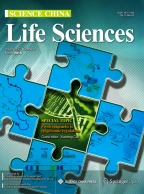- Xintian Xu1 na1,
- Ping Chen2,5 na1,
- Jingfang Wang3 na1,
- Jiannan Feng4,
- Hui Zhou2,
- Xuan Li2,
- Wu Zhong4 &
- …
- Pei Hao1,5,6
42kAccesses
1880Citations
204 Altmetric
24Mentions
Article PDF
Avoid common mistakes on your manuscript.
References
CDC. (2020). 2019 Novel Coronavirus (2019-nCoV), Wuhan, China.https://www.cdc.gov/coronavirus/novel-coronavirus-2019.html.
Cotten, M., Watson, S.J., Kellam, P., Al-Rabeeah, A.A., Makhdoom, H.Q., Assiri, A., Al-Tawfiq, J.A., Alhakeem, R.F., Madani, H., AlRabiah, F. A., et al. (2013). Transmission and evolution of the Middle East respiratory syndrome coronavirus in Saudi Arabia: a descriptive genomic study. Lancet 382, 1993–2002.
Hu, B., Zeng, L.P., Yang, X.L., Ge, X.Y., Zhang, W., Li, B., Xie, J.Z., Shen, X.R., Zhang, Y.Z., Wang, N., et al. (2017). Discovery of a rich gene pool of bat SARS-related coronaviruses provides new insights into the origin of SARS coronavirus. PLoS Pathog 13, e1006698.
Li, F. (2012). Evidence for a common evolutionary origin of coronavirus spike protein receptor-binding subunits. J Virol 86, 2856–2858.
Li, F., Li, W., Farzan, M., and Harrison, S.C. (2005). Structure of SARS coronavirus spike receptor-binding domain complexed with receptor. Science 309, 1864–1868.
Maier, J.A., Martinez, C., Kasavajhala, K., Wickstrom, L., Hauser, K.E., and Simmerling, C. (2015). ff14SB: improving the accuracy of protein side chain and backbone parameters from ff99SB. J Chem Theor Comput 11, 3696–3713.
Normile, D. (2020). Mystery virus found in Wuhan resembles bat viruses but not SARS, Chinese scientist says.https://www.sciencemag.org/news/2020/01/mystery-virus-found-wuhan-resembles-bat-viruses-not-sars-chinese-scientist-says.
Raj, V.S., Mou, H., Smits, S.L., Dekkers, D.H.W., Müller, M.A., Dijkman, R., Muth, D., Demmers, J.A.A., Zaki, A., Fouchier, R.A.M., et al. (2013). Dipeptidyl peptidase 4 is a functional receptor for the emerging human coronavirus-EMC. Nature 495, 251–254.
Schwede, T., Kopp, J., Guex, N., and Peitsch, M.C. (2003). SWISSMODEL: an automated protein homology-modeling server. Nucleic Acids Res 31, 3381–3385.
Shu, Y., and McCauley, J. (2017). GISAID: Global initiative on sharing all influenza data—from vision to reality. EuroSurveillance 22, PMCID: PMC5388101.
WHO. (2020). Pneumonia of unknown cause in China.https://www.who.int/csr/don/05-january-2020-pneumonia-of-unkown-cause-china/en/.
Zhang, Y.Z. (2020). Initial genome release of novel coronavirus.http://virological.org/t/initial-genome-release-of-novel-coronavirus/319?from=groupmessage.
Acknowledgements
This work was supported in part by grants from the National Science and Technology Major Projects for “Major New Drugs Innovation and Development” (directed by Dr. Song Li) (2018ZX09711003) of China, the National Key R&D Program (2018YFC0310600) of China, the National Natural Science Foundation of China (31771412), and Special Fund for strategic bio-resources from Chinese Academy of Sciences (ZSYS-014). We also acknowledge the National Institute for Viral Disease Control and Prevention, China CDC; Wuhan Institute of Virology, Chinese Academy of Sciences; Institute of Pathogen Biology, Chinese Academy of Medical Sciences & Peking Union Medical College; and Wuhan Jinyintan Hospital for their efforts in research and collecting the data and genome sequencing sharing. In addition, we acknowledge GISAID (https://www.gisaid.org/) for facilitating open data sharing.
Author information
Contributed equally to this work
Authors and Affiliations
Key Laboratory of Molecular Virology and Immunology, Institut Pasteur of Shanghai, Center for Biosafety Mega-Science, Chinese Academy of Sciences, Shanghai, 200031, China
Xintian Xu & Pei Hao
Key Laboratory of Synthetic Biology, CAS Center for Excellence in Molecular Plant Sciences, Chinese Academy of Sciences, Shanghai, 200032, China
Ping Chen, Hui Zhou & Xuan Li
Key Laboratory of Systems Biomedicine, Ministry of Education, Shanghai Center for Systems Biomedicine, Shanghai Jiao Tong University, Shanghai, 200240, China
Jingfang Wang
National Engineering Research Center for the Emergence Drugs, Beijing Institute of Pharmacology and Toxicology, Beijing, 100850, China
Jiannan Feng & Wu Zhong
The Joint Program in Infection and Immunity: Guangzhou Women and Children’s Medical Center, Guangzhou Medical University, Guangzhou, 510623, China
Ping Chen & Pei Hao
The Joint Program in Infection and Immunity: Institute Pasteur of Shanghai, Chinese Academy of Sciences, Shanghai, 200031, China
Pei Hao
- Xintian Xu
Search author on:PubMed Google Scholar
- Ping Chen
Search author on:PubMed Google Scholar
- Jingfang Wang
Search author on:PubMed Google Scholar
- Jiannan Feng
Search author on:PubMed Google Scholar
- Hui Zhou
Search author on:PubMed Google Scholar
- Xuan Li
Search author on:PubMed Google Scholar
- Wu Zhong
Search author on:PubMed Google Scholar
- Pei Hao
Search author on:PubMed Google Scholar
Corresponding authors
Ethics declarations
Compliance and ethics The author(s) declare that they have no conflict of interest.
Electronic supplementary material
Rights and permissions
About this article
Cite this article
Xu, X., Chen, P., Wang, J.et al. Evolution of the novel coronavirus from the ongoing Wuhan outbreak and modeling of its spike protein for risk of human transmission.Sci. China Life Sci.63, 457–460 (2020). https://doi.org/10.1007/s11427-020-1637-5
Received:
Accepted:
Published:
Issue Date:
Share this article
Anyone you share the following link with will be able to read this content:
Sorry, a shareable link is not currently available for this article.
Provided by the Springer Nature SharedIt content-sharing initiative
Profiles
- Pei HaoView author profile
